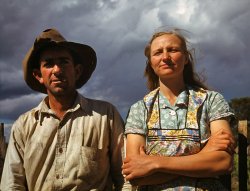
MAY CONTAIN NUTS

Search Shorpy
SHORPY ART

Framed or unframed, desk size to sofa size, printed by us in Arizona and Alabama since 2007. Explore now.
Join and Share
Ad-Free Shorpy
Shorpy is funded by you. Patreon contributors get an ad-free experience.
Learn more.

Recent comments
- Button It Up
- And with an eye on the time ...
- Working in an enclosed ashtray
- Rear View Mirror?
- Tobacco cam
- Basic fact I learned only later in life
- Put a Lid on it!
- Pinstripes in the Tower
- Sound enhancement
- 3438 in '38
- Second Career
- Their days are numbered
- Only the Sensor
- Train control mechanism
- Rarest of the Rare?? & Classy 3400 Class
- Control Mechanism
- Those standpipes
- Wrenches
- International D-40 I believe
- Job prospects
- You had me at Train
- Land of the free
- Broad-Exchange Bldg
- Parking innovation
- The old block
- "Peck turned a sweet propeller"
- National Bank Building
- Notch shot
- Straight ahead (right, left, left, right)
- Ship lifespans
Member Photos
The Shorpy
Printporium
Printporium
Search Shorpy
Search results -- 30 results per page
- Nitro Express: 1939
- ... Pete Traxler, as well as six others, escaped on June 22, 1937. All were captured or killed except Chapman.
In 1939, he shot his way ... Posted by Dave - 01/14/2018 - 7:31pm -
![Nitro Express: 1939 October 1939. "Post office in the general store. Lamoille, Iowa." Let's see now. Stamps, ammo, and a case of Iten-Barmettler, please! Medium format negative by Arthur Rothstein for the Farm Security Administration. View full size.
Bullet PointsLook at that Remington poster with the boy and his Indian chief metal silhouette! I've tried to do just that, but only have luck with a punch and hammer.
Everything's up to date in LaMoilleSocial Security was so new, they needed a poster explaining that they wanted to hand out money. (My grandfather's Social Security card, which was issued around this time, had a short explanation on the back, too, and gave an address in Washington where you could write for more information. My father's card, issued in the 1950s, had a different, but still relatively friendly, explanation, of how to use it. Mine is full of dire warnings about improper use.)
You can also send mail on an AIRPLANE for only 3 cents!
Not only that, but you can send insured parcel post packages to France, Italy, and Japan, and registered parcel post packages to Germany! (Limited time offer.)
Love that kid's overallsWish I could find some like that today.
For the same reason you can't at home.Or maybe Mom has other reasons why you can't spit on the floor. In any case, the sign helpfully offers one explanation. I can think of others, if you need more reasons to refrain.
Frost Killer indeed!I'll bet 'ol man Winter didn't dare get close to that No. 218!
Real P.O.Would not be an official Post Office if it did not have that wanted poster.
Desperado: 1898-1942A thumbnail sketch of Irving Charles Chapman, seen on the Wanted poster at lower right, from Oklahombres.org:
Irving Charles Chapman was born on December 29, 1898 in Philadelphia, Mississippi. During the stock market crash in the late 1920s, he lost all of his fortune, and decided to be a criminal instead. He began a series of kidnappings and bank heists in Mississippi, Arkansas and Louisiana. He began his criminal ways with a few minor arrests in Florida and New Jersey, before embarking on a decade-long career as a gangster.
In 1932 he was sentenced to serve 9 to 14 years for a Miden, Louisiana, bank robbery. However, he and two others escaped from the Caddo Parish jail at Shreveport on December 5, 1932, by lowering themselves from their eighth-floor cell with a rope made from whatever they could find. Captured in 1934, he was wounded in a gunbattle with police and sentenced to 15 years for a bank robbery in Mississippi. He was turned over to Arkansas, where he received another 15-year term for another bank heist. He escaped from the Tucker Prison (some reports say he escaped from a Little Rock prison) on August 25, 1936, using a pistol taken from the warden's office.
Chapman then robbed the First National bank of Atlanta, Texas (twice). He was captured after the second robbery and given a 60-year prison term. He was sent to Eastham Prison Farm, the same one Clyde Barrow was once imprisoned at. He along with infamous Oklahoma bandit Pete Traxler, as well as six others, escaped on June 22, 1937. All were captured or killed except Chapman.
In 1939, he shot his way out of a police trap near his home town in Mississippi. In January 1942, he shot Patrolman Ralph McNair at Meridian and escaped. Finally, on February 22, 1942, he drove away from his residence and right into a roadblock. He was shot, and before dying told the police, "Go ahead and shoot, you bastards!"
They didn't have to, as he succumbed to his wounds. He was buried at the Sandtown Cemetery at Sandtown, Mississippi. So ended the career of this famous outlaw!
The Wanted PosterClick to enlarge.
Different country, different decadeBut kind of reminds me of may preschool days when my grandma gave us a little change in order to run down to the neighbourhood grocery shop and have a Kaiser roll filled with a whippet cookie. Yummy.
Alas, no more neighbourhood grocery stores. No more running down the street on one's own for a preschooler. And a white flour wheat product filled with foamed sugar and fat? That's just sooo nutritionally incorrect.
Sam Drucker Seal of ApprovalWhile looking a little beat down in the photo, a nice condition Eclipse/Tappen "Frost Killer" stove today at auction might go for around $2,000+. Whether ol' No. 218 is still in the mix somewhere, who knows?
WantedIRVING CHARLES CHAPMAN, for Bank Robbery
It has an ageThat Eclipse #218 "Frost Killer" stove predates 1920, the year that the Tappan family of Mansfield, Ohio, changed the name of their stove company from Eclipse to Tappan.
I'm undecided about whether the storekeeper is burning coal or wood (it could use either), but I am fairly certain that the stains below the firebox door are evidence of sitters-and-spitters-and-whittlers getting cranked up for the winter.
And the case of Iten Barmettler? It's either crackers or cookies, both of which the Iten Barmettler Biscuit Company of Omaha made for years.
They must be brothers The postmaster and the coffee grinder in this:
https://www.shorpy.com/node/22928
Sure look as if they could be brothers.
[They are the same person. -tterrace]
[In the same store. - Dave]
(The Gallery, Arthur Rothstein, Kids, Stores & Markets)](https://www.shorpy.com/files/images/SHORPY-8b19033a.thumbnail.jpg)
- Randle Elementary: 1940
- ... manual transmission. When the car was introduced in autumn 1937, people found it ugly. The factory soon made slight changes to its ... Posted by Dave - 06/11/2015 - 3:40pm -
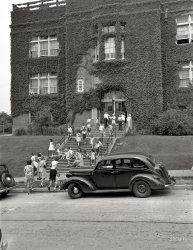
- Cranbury-Bound: 1940
- ... Studebaker to abruptly discontinue the name "Dictator" in 1937, resurrecting the Commander name, which had been dropped in 1935.
For ... Posted by Dave - 04/30/2021 - 8:30pm -
![Cranbury-Bound: 1940 July 1940. "Near Shawboro, North Carolina. Group of Florida migrants on their way to Cranberry [i.e., Cranbury], New Jersey, to pick potatoes." Some of the folks last seen here -- 12 years ago! Photo by Jack Delano for the Farm Security Administration. View full size.
Original caption writer nodsI believe the original caption was intended to refer to Cranbury, a nice little town a few miles east of Princeton.
That Tie!This young man is barefoot, but still rocking a tie! Looks ready for a fight to protect everything they have strapped to that car. Amazing photo.
Tag10 = Broward County
Boxer PoseThe young man is giving his all to his inner Joe Lewis.
Rough RoadsThe collision damage may have helped get it started, but that crack on the front fender is a stress crack from the constant shaking and bouncing of the rough ride.
Car ID1935 Studebaker Dictator.
[1934, not 1935. - Dave]
Solution to a knotty problemMy son's solution: "If you can't tie a knot, tie a lot." (He resisted my instruction in this matter.)
American BeautyI highly recommend to everybody to follow Dave’s “last seen here” link to see one of the all-star Shorpy photos of all time. If there are any more with that amazing woman in them, I would love to see them, please.
Unfortunate NameThe rise of Adolf Hitler prompted Studebaker to abruptly discontinue the name "Dictator" in 1937, resurrecting the Commander name, which had been dropped in 1935.
For that reason, maybe you could get these newish cars cheap. Still, asking 1,300 hard miles from it was a risky proposition.
The Pep Boys lost their case In 1938 The Pep Boys—Manny, Moe & Jack tried to prevent Pure Oil from using the term "Pep" in their advertisements, unfortunately for them they lost their case.
The Official Gazette of the United States Patent Office reports:
THE PEP BOYS - MANNY, MOE AND JACK v. AMERICAN OIL COMPANY, Cancellation No. 2870. In a decision rendered April 21, 1938 ( 163 Ms. Dec. 24 ), Assistant Commissioner Frazer held that American Oil Company, of Peoria, Ill., was entitled to register the term “ Pep ” as a trade - mark for gasoline and fuel oil for combustion motors, and that the registration which it had obtained should not be cancelled. The ground of the decision is that the petitioner for cancellation has not shown itself to be damaged with the registration and that the word is not descriptive of the goods.
(The Gallery, Agriculture, Cars, Trucks, Buses, Jack Delano, Kids)](https://www.shorpy.com/files/images/SHORPY-8c02709a.thumbnail.jpg)
- Top Shelf: 1942
- ... has restored one of the original townhomes built here in 1937 as part of the federal housing project and we operate it as a house ... Posted by Dave - 03/20/2014 - 11:58am -
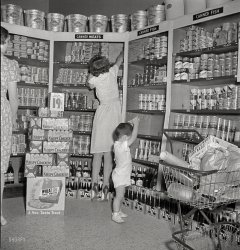
- Peeps: 1939
- ... taken at Woodring Home Washington DC, on December 24, 1937.
Polio The oldest boy in this photo died of Infantile Paralysis ... Posted by Dave - 08/29/2012 - 2:10pm -
![Peeps: 1939 April 5, 1939. Washington, D.C. "Children of the Secretary of War and Mrs. Harry H. Woodring were given a preview of what to expect from the Easter Bunny on Sunday. The children, Cooper, Melissa and Marcus Coolidge, are expected to roll their eggs at the White House on Easter Monday." View full size.
Basket CaseI believe the chicks in the basket are real, living baby chicks as my grandfather used to have them sent to him in the mail when he decided to raise various chickens for a few years. Also the kids in the photo look subdued and overheated (or have rosacea) and do not seem anxious to handle these chicks. The dachshund on the couch seems to have done a little too much celebrating, I know that feeling. Happy Easter Shorpy fans and a million thanks to Shorpy creators for enhancing every day with something fascinating to me.
Jeep?Is that Jeep there on the left (from the old Popeye cartoons) or just a simple teddy bear with a beak?
[As a fellow Jeep fan from way back, I wish it was, but I think it's supposed to be a duck or chicken. Possibly in a stretch, a platypus? - tterrace]
This is what you getif you don't boil those eggs long enough before you color them!
A real life saverIt looks like "Dennis the Menace" on the right is hiding a roll of Lifesavers in his left hand from the other kids.
SadI have always hated the idea of giving baby chicks and bunnies for Easter because you how long they will hold the interest of the kids!!
But never mind, I loved the capture
of Easters gone by.
AshtrayThat looks like one of the very ashtrays I grew up with in the ancestral terrace family abode. I still have them, and have photographed one in authentic black and white.
3 Little Angels...The Father of these Three Little Angels...
Harry Woodring was born in Elk City, Kansas in 1887 and because of his father's financial straits he was contributing to the family income by the time he was in the fourth grade.
Woodring once said:
"The fact that a Kansas country boy could be elected governor of this great commonwealth of ours, and subsequently serve in the Cabinet of the President (FDR), is further evidence that our great democracy does work. ... A Kansas boy has dined with kings and queens, with princes and princesses, ambassadors and foreign diplomats, and has sat at the right hand of the President. Truly, a Kansas boy has seen Utopia from the mountaintops. But today a Kansas boy returns to heaven."
Harmonica in photoJust happened to be there. I can't think why that would be in an Easter basket.
Life and deathI vividly remember at age five learning the concept of life and death as the chicks we received at Easter quickly died after a few days. This was long ago. Giving Easter chicks was banned in Philadelphia sometime in the 1950s.
Go HarryBased on info provided by sugarpea, old Harry was about 53 when this picture was taken. He was rather long in the tooth to be a Pop to these cuties, but I guess it happens all the time. Snow on the roof and all that.
EarlierPhoto taken at Woodring Home Washington DC, on December 24, 1937.
PolioThe oldest boy in this photo died of Infantile Paralysis (a.k.a. Polio) on July 19th 1946.
I can't find much about the other two, still living possibly?
StuffedBasket Case, the "dachshund" on the couch appears to be stuffed in more ways than one, considering that it has a seam down its spine.
(The Gallery, Easter, Harris + Ewing, Kids)](https://www.shorpy.com/files/images/SHORPY_26420a-EASTER.thumbnail.jpg)
- Ashepoo P.O.: 1938
- ... Los Angeles to relocate from Independence Missouri in May, 1937. Many years later in 1963 my brother and I bought 1933 Chevrolet 2 door ... Posted by Dave - 12/25/2017 - 10:40am -
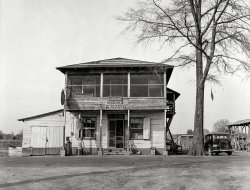
- Carbery Mansion: 1901
- ... picture came to light.
Washington Post, Nov 3, 1937
LOTS of wires on that pole... So.. are the wires ... Posted by Dave - 09/12/2011 - 5:02pm -
![Carbery Mansion: 1901 Washington, D.C., circa 1901. "Carberry [Carbery] Mansion." Built for Thomas Carbery in 1818 at 17th and C Streets N.W. National Photo Co. View full size.
Fixer-UpperThis is what used to be called a handyman's special, needs a little work. I'm not a snob, but calling this a mansion is a bit of a stretch.
Double-dare SpookyNothing in a neighborhood could fire a young boy's imagination quite like a huge run down and empty old house. I wish that I, along with my boyhood friends, could jump into this picture today.
On the EdgeThe mansion was razed in 1903; Carbery was Mayor of Washington from 1822 to 1824 and I'm sure the mansion was in better shape back then!
"Miracle House"I suppose I don't have the eye for spookiness which other commenters readily pick up on: before finding the following article I viewed this house as a typical run-down dwelling. Also, it seems to me (a non-Catholic) that Prince Hohenlohe received an inordinate degree of credit for Ms. Mattingly's "cure."
Miracle House
by Marie Lomas
Washington's Miracle House has again come to light. A water color painting discovered a few days ago by the curator at a local museum brings up a story stranger by far than many of the bizarre tales of fiction. Although separated from its identification marks, the picture has been established as a rear view of the Miracle House, or Ghost House, as it was sometimes called, down in the neighborhood of "Foggy Bottom."
...
Even as the residence of Capt. Thomas Carbery in 1824, it was familiarly known as the the Miracle House, for it was here that the famous Mattingly miracle occurred.
The legend, which will accompany the picture now carefully guarded behind locked doors of a display case in the D.A.R. museum, states: "This house, in 1824, was the residence of the Mayor, Capt. Thomas Carbery, and living with him was his widowed sister, Mrs. Ann Mattingly, a great sufferer and confirmed invalid. Marvelous cures were being made by Prince Alexander Hohenlohe, a Catholic Priest of Bomberg, Germany, throughout Europe. His Highness stated to the Diocese of Baltimore that he would offer up a prayer the tenth of every month at 9 a.m. for those living out of Europe.
"Mrs. Mattingly performed a novena, or nine days' devotion, commencing March 1, 1824, assisted by the pastor of St. Patrick's Church, and on March 10 she was relieved of all pain and, although bedridden, rose from her bed and opened the door to callers."
This miracle was sworn to before John Marshall, Chief Justice of the United States, and immediately aroused great excitement throughout Washington.
No doubt the setting was partially responsible for many of the later stories in connection with Miracle House, which soon became and enigma to the residents of lower Washington. Situated near the canal and lock houses, which still stand on Constitution avenue and Seventeenth street, it was at the edge of what was considered a dense and dangerous jungle. The nearby shores were covered with an almost impenetrable growth of somber trees shrouded in tangled vines. Hoarse croaking of frogs and the screams of swamp fowl pierced the abysmal darkness of the nights.
Even Scott, the major-domo of the great marble edifice built by the D.A.R. on the site of the "Ghost House," vouches for the mystery of its unknown inhabitants. He recalls today his frog-catching expeditions into the swamps near the house, "We could see people in there and sometimes a light," he said, "but nobody ever came out."
In its later days it was deserted, but the latest happenings at the "haunted house," as it was called by the little Negro boys of Foggy Bottom, continued to be the news of the day.
The house was demolished in 1903 to make way for Memorial Continental Hall. Perhaps when shadows lengthen and the massive doors are locked for the night the spirit of the haunted house still lingers in the familiar surroundings of aristocratic Hepplewhites, Chippendales, Duncan Phyfes and shining Steigle glass. After all, it was in the basement of this museum, on the site of the Miracle House that the picture came to light.
Washington Post, Nov 3, 1937
LOTS of wires on that pole...So.. are the wires telephone/telegraph wires or "newfangled" electric wires? In 1901 electricity was relatively new, while telephone/telegraph had been around for 25+ years by that time.
What is interesting is that there was no such thing as a big trunk cable. Looks like everything was run individually. I can remember seeing other old photos here on Shorpy of city scenes that showed poles literally ready to fall over with the weight of so many wires on them.
Imagine what our cities, and towns for that matter, would look like today if poles were huge with tons of individual wires running on them!
(The Gallery, D.C., Natl Photo)](https://www.shorpy.com/files/images/00178u.thumbnail.jpg)
- Shady Rest: 1940
- ... popular among young people when my mom was in college, (1937 - 41).
(The Gallery, Russell Lee) ... Posted by Dave - 09/20/2014 - 8:48am -
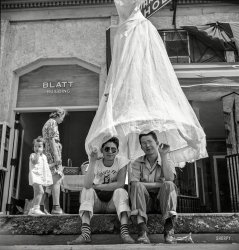
- Time Is Short: 1942
- ... Publishing Association, Inc., was established in 1937 as a volunteer organization shortly after the construction of Greenbelt, ... residents."
Volume 1, Number 1 was dated November 24, 1937, and one story opened with a hint of summon all villagers to bring flaming ... Posted by Dave - 04/27/2013 - 3:56pm -
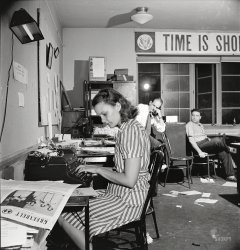
- The Summer of '42
- ... take the three easiest cars to I.D. L to R: 1940 Hudson, 1937 Ford, and 1940 Ford Standard.
Bike license What's the story on a ... Posted by Dave - 08/13/2013 - 3:34pm -
![The Summer of '42 July 1942. "Sunday loungers at Hains Point." Peaceful wartime Washington. Photo by Marjory Collins for the Office of War Information. View full size.
WhewI can just feel the stifling heat.
Uncle Sam Does't Want YouAt first I wondered why a fellow that age wasn't in uniform given the time period. Then I noticed his spectacles. Maybe defective peepers kept him out of the war?
[Not even half of draft-age American men were in military service during the war. The notion that just about any young guy you might see in these WW2-era photos was destined for military service is something of a fallacy. - Dave]
Draft AgeInteresting...
My grandfather entered WW2 service in 1944 at age 33, much older than many inductees. He was married with 3 children at the time. I've been told the pool of eligible draftees had really dwindled by then, and he may have enlisted to avoid being drafted. He was always very proud of his overseas service.
Sturmey Archer HubThe girl's bike has a Sturmey-Archer 3-speed hub, and is probably a Raleigh. The guy's bike is more used, probably a Schwinn one speed. The live in different towns, to judge from the license and lack of one on the two bikes.
Catching UpAlong with some relaxation and lunch, looks like they may be catching up on their newspaper reading, most likely war news at the time.
Low Hanging FruitI'll take the three easiest cars to I.D. L to R: 1940 Hudson, 1937 Ford, and 1940 Ford Standard.
Bike licenseWhat's the story on a "bicycle license"? Theft prevention / proof of ownership? Prosecution of traffic violations? Tax collection? Other? Right now I would put my money on the tax people.
Is This Trip Really Necessary?There's a War on, You Know!
Apparently neither gas rationing nor those oft-used slogans from the era were on the minds of all those automobile drivers. Or, maybe this was one last chance to get out for a drive before feeling the full effect of restrictions started just a few months earlier.
[Nationwide gasoline rationing was 5 months away, starting Dec. 1, 1942. - tterrace]
Actually, this may have been photographed at the end of the 'Eastern Seaboard Card Rationing' program that regulated 17 states along the east coast beginning in Feb '42. That program ended July 22nd, after which a 'card rationing' program was instituted which created the famous 'A', 'B', etc rationing coupons.
Yes, it was not until December that the rest of the nation was under rationing controls.
Been there Done that!My wife and I used to ride our bikes there and later drive that in the early 60s when we were dating. It was also a lovers lane at night. We may have gone that dozens of times. It was a very nice place to go to. Sometimes we would park at the northern end and walk all the way to the tip on one side and back up the other side.
And the Spring of '47My dad spent the war years in the Pacific. Mom & Dad were married in May 1947, and I was born 2/21/48 (Dad didn't waste any time!) They honeymooned in Washington, DC - I can't tell you how many pix I have of them in poses similar to this.
The War yearsDad spent WWII in the Pacific as well, in the SeaBees. I can't recall when he enlisted, but it was probably '43, when he was 44 years old. (WWI vet, as well; lied about his age to enlist!) Puts me in the near forefront of Boomers, class of '46.
Out of state plateThe bike on the left is a Schwinn New World with a fillet-brazed chrome-molybdenum frame and a Hamilton Ohio license tag (it was one step below the top of the line, lugged frame Paramount model). Nice bike!
Many localities at the time encouraged/required bicycles to be registered and have metal mini license plates attached because it supposedly greatly increased the chances of getting a bike back if it got lost or stolen, at least that's what we were told by the police who occasionally came to chat about such things at our school assemblies. I shudder to think about what they must talk about now...
(The Gallery, Bicycles, D.C., Marjory Collins)](https://www.shorpy.com/files/images/SHORPY_8c34888u.thumbnail.jpg)
- Milwaukee Boneyard: 1936
- ... Auburns were made from 1900 - 1936 with final sales in 1937.
(The Gallery, Carl Mydans, Great Depression, Milwaukee) ... Posted by Dave - 09/08/2011 - 5:05pm -
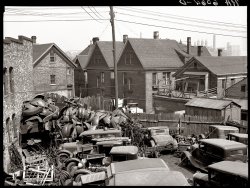
- Candy, Electricity: 1940
- ... old structure is long gone.
Car ID L-R: 1937 DeSoto, 1936 Ford, 1931 Chevrolet, 1930 Chevrolet, 1936 Chevrolet, 1938 Chevrolet, Buick?, 1937 Chevrolet, 1940 Ford, 1937 Hudson
Electric co-ops ... Posted by Dave - 09/02/2018 - 10:18am -
![Candy, Electricity: 1940 September 1940. "Main street in Montrose, Colorado." Special guest appearance by Reddy Kilowatt. Medium format negative by Russell Lee. View full size.
Reddy has left the buildingAnd his building has left as well, but the adjacent buildings beyond it appear to have survived. Interestingly, the bank location is still still a bank, but the beautiful old structure is long gone.
Car IDL-R: 1937 DeSoto, 1936 Ford, 1931 Chevrolet, 1930 Chevrolet, 1936 Chevrolet, 1938 Chevrolet, Buick?, 1937 Chevrolet, 1940 Ford, 1937 Hudson
Electric co-opshttp://www.montrosehistory.org/western-colorado-power-company
Interesting history of providing power to rural areas. Few people realize electric cooperatives supply power to over half of the US land mass.
[Almost three-quarters of the country by land area, but only 11 percent of kilowatt-hours consumed. - Dave]
(The Gallery, Russell Lee, Small Towns, Stores & Markets)](https://www.shorpy.com/files/images/SHORPY-8b26212a.thumbnail.jpg)
- Mississota: 1905
- ... state Capitol on same grounds until it was torn down in 1937. Wikipedia has a photo of the 2nd which matches that dome.
Dome ID ... the State Capitol was completed in 1883, and demolished in 1937. It served as the capitol building only through 1905 (22 years), as the ... Posted by Dave - 05/24/2021 - 10:50am -
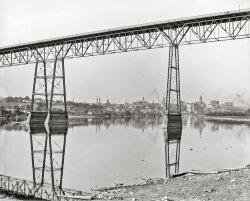
- Broadway Pharmacist: 1957
- ... phones in an antique store and installed in our historic (1937) house in Phoenix Arizona about 5 years ago. It still worked although our ... Posted by Cazzorla - 07/06/2014 - 6:12pm -
![Broadway Pharmacist: 1957 I purchased this 8 x 10 print at the swap meet. On the back is printed:
Mr. Cliff McCorkle, proprietor and pharmacist of the 101 Broadway Pharmacy, Richmond, Calif., preparing a prescription. 5 November 1957. Photographer: Pfc. Barbara A. Warner, Sixth US Army Photo Lab, Presidio of San Francisco, Calif. Official US Army photograph. View full size.
Hey, who ate the cheese?!You have to love the ingenuity of gluing a Victor mousetrap to the drawer and use the "snap" clip to hold what looks to be a hand towel.
PinwormsThe prescription that he is working on (Vanquin) is for pinworms and is supposedly no longer available in the USA. It seems that it caused gastrointestinal problems among other things.
Royal Quiet De Luxe typewriterMy mother had this typewriter from her college days in the mid-fifties. It's rather nice.
Automatic Electric AE50sNot the jazzy "jukebox" variety with the optional chrome, but just as functional.
[That's about the phones, folks. -tterrace]
Note the fan awhirr -- must have been warm in Richmond that day.
That's a ZERO fan,which, along with the ESKIMO brand, were mainstay coolers in the Fifties.
Clever names, no?
Popular typewriterThat model, or the 1938 version of it, was used by Jerry Siegel, creator of Superman:
“One of the little known stories about Superman is that he owes a lot of his existence to this typewriter...I liked this typewriter so much that it was the only portable I ever had or used.” -- Jerry Siegel, 1995.
It was also used by Ernest Hemingway and Ian Fleming.
The FanIt's a Zero made by Bersted Mfg. who made several cheapo brands to be sold at drug stores for a few dollars. The quality brands such as GE, Westinghouse and Robbins & Myers were sold in appliance stores.
A Double Take On The PhonesI found one of those phones in an antique store and installed in our historic (1937) house in Phoenix Arizona about 5 years ago. It still worked although our grandchildren were clueless about how to use a rotary phone. You could club someone to death with the Bakelite handset. It weighed about 2 lbs.
I have always been fascinatedby how pharmacists were able to get the medicine bottles into the typewriter to create the labels. Well kept secret at pharmacy school, no doubt.
Zero FanI have a Zero fan that I still use. It rattles a bit, just a little, but it works well. I just have to remember to oil the bearings every summer.
Built Like a TankWhen I purchased my home in Vancouver, B.C. in 1977, the British Columbia Telephone Company installed this model 50 wall phone in my kitchen. It was originally a rental phone, and when deregulation arrived I purchased this as my home phone for $35.00. While it does not have a chrome dial, it does have the deluxe chrome rings on the heavy handset. This telephone has never needed service in all these years, and it is used a lot. Dial phones came late to Vancouver, and most homes changed from manual exchanges with operators to dial in the 1950s. Originally these phones were without a dial, and as exchanges were converted the "Telephone Man" came 'round to each home and installed a dial. My first phone was in an apartment in 1967, and no private lines were available, so I had a party line for ten years. Such was life with B.C. Tel, a subsidiary of General Telephone at that time.
No longer a pharmacy, 101 BroadwayLooks like a temp emplyment office now
View Larger Map
Two wall phones?I have a wall phone like those, made by Automatic Electric, the General Telephone equivalent of Western Electric for AT&T. As far as I know, though, Richmond was always Pacific Telephone, an AT&T subsidiary, so why are those phones there? I was born and raised a few blocks from that pharmacy, and am a bit of a phone nut, with a collection of interesting, different phones - like those!
(ShorpyBlog, Member Gallery)](https://www.shorpy.com/files/images/06232014114951.thumbnail.jpg)
- Pittsburgh Posts: 1941
- ... fastened a piece of frosted mylar at the film plane of my 1937 Ikoflex (identical to one used by Jack Delano) and sighted across the ... Posted by Dave - 06/06/2020 - 12:53pm -
![Pittsburgh Posts: 1941 June 1941. "Rain. Pittsburgh, Pennsylvania." Medium format acetate negative by John Vachon for the Farm Security Administration. View full size.
Is the circus in town?What is that large tent filling the street a block ahead?
Ah, I see nowIt's an awning on the next porch.
A thousand words?This is a picture you can hear.
DepthConsidering the light level, Vachon has achieved great depth of field without resorting to a slow shutter speed (man and umbrella in motion not blurred). I view in awe. Camera? Rollieflex?
Great Cars!Facing us across the street is a 1935 Chevrolet. The third car, facing us, is a 1940 Chevrolet. The first car facing us on the right is a 1936 Ford.
Bonus lovelinessThe abacus motif of the transom grill directly above the porch rail is just plain beautiful.
Posts and balusters still there!Astute Shorpy followers will notice that the fragment of column on the far left is the same column as the one seen in a different view posted in June 2008:
https://www.shorpy.com/node/3793
The location was identified in a comment as being on the corner of Madison and Lockhart. Here's the same view from the same location today:
https://goo.gl/maps/J1xaf8nmE5AJNUQ87
Posts and balusters are still present at this location. The lack of spindlework causes it to lose some of its old charm, in my opinion.
Ticket TimeParking left wheels to curb brings a parking ticket nearly everywhere. Well, except in England, of course.
Depth of FieldI had the same reaction that ManyBuicks did. I shoot with several twin lens reflex cameras from the 1930s, so I experimented a bit. I fastened a piece of frosted mylar at the film plane of my 1937 Ikoflex (identical to one used by Jack Delano) and sighted across the facade of my row of townhouses. At f/8 the depth of field was barely adequate, and not nearly as good as in Vachon’s rain shot. Considering that the original photo was probably shot at about 1/50 second (common on cameras of that era) to almost stop the walker, and the day was quite dark, I think that would have required film with an unrealistically high ASA speed, especially for those years.
Then I found the original scan at the Library of Congress. The film was medium format, alright, but it was sheet film. (The notch codes are visible.) That means that Vachon could have used a 2x3 Speed Graphic camera. They don’t have a front swing movement for the lens, but by dropping the bed and holding the camera sidewise, you can achieve the same result.
However he did it, John Vachon knew what he was doing.
[The film size is 4¼ x 3¼ inches. --Dave]
Singing In The RainJust, singing in the rain. What a glorious feeling.
Thanks to the keen eye of davidk I am also mesmerized by the abacus motif.
A distinction without a differenceSagebrushCity might have missed the format size of the camera, but everything else he posited Vachon doing could have been done just as well with a 4¼ x 3¼ Graphic, which also existed at the time (I used to have one).
(The Gallery, Cars, Trucks, Buses, John Vachon, Pittsburgh)](https://www.shorpy.com/files/images/SHORPY-8c19404a.thumbnail.jpg)
- Billie Burke: 1918
- ... face."
Early Ghostbuster She was at her best in the 1937 Cary Grant fantasy film "Topper", playing Mrs Topper.
The Uniform ... Posted by Dave - 04/18/2013 - 5:50pm -
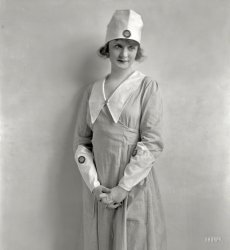
- Wild Animal Circus: 1936
- ... Indian Show I'm looking for pictures from 1935 through 1937 of the Downie Bros Indian Show. My father was part of the show riding a ... Posted by Dave - 12/27/2007 - 8:53pm -
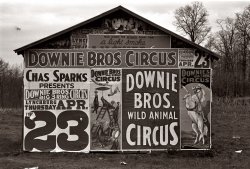
- In the Sticks: 1935
- ... PF Flyers (by BF Goodrich) wouldn't make the scene until 1937.
(The Gallery, Arthur Rothstein, Rural America) ... Posted by Dave - 07/28/2013 - 12:19am -
![In the Sticks: 1935 Sept. 1935. "Daughter of farmer who will be resettled. Wolf Creek Farms, Ga." Photo by Arthur Rothstein for the Resettlement Administration. View full size.
The SticksInstruments of attitude adjustment in those days I dare say.
[They're for the laundry. - Dave]
Sometimes.
Depression miseryThis photo reminded me of the Migrant Mother 1936 by Dorothea Lange. The hard times had both women either suffering tooth aches or holding their heads in despair. The Depression brought an equality of desolation for men, women and children.
Dreams and aspirationsA powerfully simple, evocative photo that makes one wonder what were her dreams and aspirations. Was she doomed to isolation and lifelong poverty? Did the resettlement give her a second chance at life?
What kind of shoes are those?They look like Chuck Taylors!
topkicksGotta love her well worn pair of hi-top sneakers,Converse maybe ?
ClassicIt looks like she's wearing a pair of well-used Chuck Taylor High Tops.
Chuck Taylor ConverseAccording to Wikipedia, at least, Chuck Taylor All-Stars have been around since 1917, so it's very possible that is exactly what she is wearing. Quite a long-lived style!
It could be my mother,she went through the depression on the prairies in Saskatchewan, and when I asked her what it was like she would never mention one event about those horrible times.
Amazing Photograph and subject.I'm mesmerized by this for some reason. There's big dreams in those eyes.
SneakersThe ribbed toe, stitching, and emblem on the sneakers indicate that they are they are more likely a style of Keds introduced in 1934 by the U.S. Rubber Company (later known as Uniroyal). If so, the farmer's daughter's shoes were less than two years old at best.
U.S. Rubber's Keds claimed to have launched the original sneaker brand - Champion - in 1916, a year before the Converse Rubber Shoe Company introduced their All Star version. Keds even claimed to have popularized the very word sneaker - despite the fact that the word had been synonymous with canvas and rubber tennis shoes for years.
In 1934 Keds with the the Scientific Last and Shockproof Insole were available in all-black or black and white, which was reminiscent of the style they replaced.
PF Flyers (by BF Goodrich) wouldn't make the scene until 1937.
(The Gallery, Arthur Rothstein, Rural America)](https://www.shorpy.com/files/images/SHORPY_8b26703u.thumbnail.jpg)
- Kiewel Beer: 1940
- ... From left,
1940 Chevy with deluxe rear center guard.
1937-38 Chrysler
1937 Nash
1939 Chrysler?
1940 Oldsmobile
Comments welcome.
The ... Posted by Dave - 11/16/2011 - 11:45am -
![Kiewel Beer: 1940 October 1940. "Grand Forks, North Dakota." 35mm nitrate negative by John Vachon for the Farm Security Administration. View full size.
A different use for grainInstead of selling beer, that location is home to a bakery. The Dotty Dunn hat store was at 17 N. 3rd Street. It, the bar and the dry cleaners are all gone, even the cut rate store to the left. The only building that survives is the one to the extreme right. Which appears to have a barber shop. BTW, Dotty Dunn Hats was a chain store operation.
View Larger Map
BarrenOnce again, like the Chicago photo, few people and an angle chosen that makes it seem that you're looking down on a detailed area of a really cool O-gauge layout. Perhaps that's what Vachon was trying to capture.
Bull City Boy has a great question, what is that automobile? A totally different look from the others. I haven't clue alas, [Lincoln Zephyr?] but now I gotta find out. What is it?
Anywhere, U.S.A.Nostalgic picture which is so similar to the small town in which I grew up but on the East Coast. Our businesses on Main Street (with the same kind of diagonal parking before meters) were Carroll Cut Rate, Adam's Hats,Gene's Bar featuring Rheingold beer, Pete's Barber Shop and Bashura's Shoe Repair. I used to love the fumes in the shoemakers and cleaners, both now deemed very lethal, i.e. shoe polish, glues, leather-tanning chemicals and carbon tetrachloride. We also had a Hart's Five and Dime and a First National grocery. Kind of neat to think that whether you grew up in the East or Midwest, the small town Main Streets were so similar.
Brew NotesAs a side note, Kiewel's Beer was brewed in Little Falls, Minnesota, while Heileman's Old Style (hanging sign over the tavern door) was brewed in La Crosse, Wisconsin.
Interior HingesSo, is no one going to identify the autos, especially the fourth from the left?
P.S. I've been away for five weeks. Glad to be back and I'll be catching up with Shorpy as best I can.
Inflation$1.98 in 1940 would be about $32 today. Not a bad price for a man's hat.
Cars ID'dFrom left,
1940 Chevy with deluxe rear center guard.
1937-38 Chrysler
1937 Nash
1939 Chrysler?
1940 Oldsmobile
Comments welcome.
The vehicle 4th from the left is a 1939 Ford Deluxe 2 door sedan. Better later than never.
(The Gallery, Cars, Trucks, Buses, John Vachon)](https://www.shorpy.com/files/images/SHORPY_8a32539a.thumbnail.jpg)
- Child of migratory workers
- ...
my father could have been that child Dad was born in 1937 to migrant worker parents. He started picking about 5 yrs of age. Belle ... Posted by Ken - 09/07/2011 - 4:00pm -
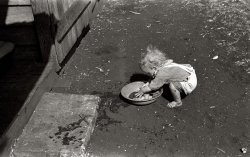
- Dog Cakes: 1910
- ... in downtown Utica, within sight of the Erie Canal.
In 1937, the building was tripled in size to accommodate the needs of more than ... Posted by Dave - 08/15/2012 - 3:06pm -
![Dog Cakes: 1910 Utica, New York, circa 1910. "United Commercial Travelers of America building." On a block offering a cornucopia of goods and services: Dog Cakes (not to be confused with Twentieth Century Lunch three doors down), dog collars, bananas, cigars, an amusement arcade (the Shooting Gallery), coal, shoes, trunks and, finally, crockery and glassware. 8x10 inch glass negative View full size.
Close to homeThis building is now an apartment complex, but most of the buildings to the right are gone, lost in a massive fire in 1948. Among them was my father-in-law's store, just out of the picture. If you could pan to the right, I'd appreciate it!
[Done. - Dave]
OK I'll BiteWhat's a dog cake?
What better to eat with Dog Cakes butDog Milk!
I took this photo of a can of Dog Milk that I saw in a Restaurant where I was dining in Japan a few years ago.
I asked the waitress how many dogs had to be milked to get a whole can of Dog Milk, but she didn't seem to understand.
70 Genesee StreetIn 1905, the company needed more office space and moved to this building, at 70 Genesee Street in downtown Utica, within sight of the Erie Canal.
In 1937, the building was tripled in size to accommodate the needs of more than 200,000 policyholders.
View Larger Map
The lunch is up to dateI'm reassured. If they advertised a 19th Century lunch, it would be ten years past its expiration date. Which is only four years past the Pure Food and Drug Act.
Kid-Free Eatery"20th Century Lunch -- For Ladies and Gentlemen"
Penny ArcadeThat's a great view of an old penny arcade, taken at a time when many of the attractions actually did cost only one cent. At the doorway is what appears to be a 44-note piano. These were usually set up to play a tune for a nickel, although the operator could have set it to play continuously as a means to entice passersby to enter. Along the right wall can be seen a row of Mutoscopes similar to the ones in the photo below. These played a moving picture supplied by individual frames printed on cards and formed into a reel. Each real contained one short movie, and since each Mutoscope held only one reel, the arcade would have many Mutoscopes in order to offer a variety of movies.
"Dog Cakes" - No dogs addedSpratts "Dog Cakes" was the first mass-produced dog food. James Spratt came up with "Patented Meat Fibrine Dog Cakes" after seeing dogs eating hardtack biscuits. The biscuits were initially marketed to country gentlemen in England for their hunting dogs.
Production was relatively limited until after James Spratt's death. However, in the 1880s, the company went public and became one of North America's marketed company in the 20th Century. They were eventually bought out by Purina.
Charles Crufts, who founded the Cruft's Dog Show began as a clerk for Spratt's.
Spratt was secretive about the actual meaty ingredient in his "cakes" and early ads in England intimated it was buffalo.
(The Gallery, Dogs, DPC, Stores & Markets, Utica)](https://www.shorpy.com/files/images/4a19575a.thumbnail.jpg)
- Washington Flyer: 1921
- ... and broke his leg while exercising at Belmont Park in 1937. Through medical errors, his leg was ultimately amputated above the knee a ... Posted by Dave - 08/13/2013 - 4:09pm -
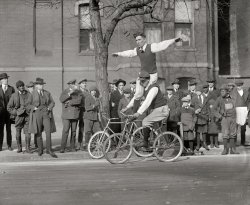
- Vegetarian Nut: 1926
- ...
Thanks, Dave!
BTW, In 1937, Ardil, peanut fibre, was created as I understand by separating the white ... Posted by Dave - 08/05/2012 - 5:56pm -
![Vegetarian Nut: 1926 Washington, D.C., 1926. "Semmes Motor Co. -- Schindler's truck." From an interesting if moldy series of pictures showing Washington delivery trucks in their natural habitat of side streets and back alleys. Note the different varieties of "Wantmor" peanut butter sandwiches. National Photo Co. View full size.
Nuts to you!Inside:
Thanks, Dave!
BTW, In 1937, Ardil, peanut fibre, was created as I understand by separating the white inner layer from the shell and creating the fibre. Somewhere, I have a sample which my mother got, probably in 1946 when a plant was built in Dumfries, my mother's home town by Imperial Chemical Industries. I can recall it being a slightly yellowish white. It is now brownish and somewhat brittle.. Ardil production ceased in 1957.
http://www.pca.com.au/ardil-the-forgotten-fibre.php
LintelsPlease note the different lintels in the brick openings. The cut-stone lintel in the center is undoubtedly part of the original brick wall. As other openings (right and left) were needed, brick was cut away and I-beams, iron or steel, were used: not of the same character as the cut-stone.
DetailThe stone lintel over the entryway. The initials are a nice touch. I wonder whose?
[WAC = Washington Athletic Club. - Dave]
Man, that was good p-butter!Schindler's Nut Co. expired in the 1990s, I think. They supplied peanuts to the Baltimore baseball parks for many years.
But I remember them for their peanut butter. In the '50s, the only place that sold it was the mom-and-pop neighborhood groceries, no chains (at least none my mom shopped in).
I swear, you could lay block with that stuff, but I have never found any p.b. anywhere that tastes as good. About 20 years back, I got to wondering if they still made it, and called their office in Baltimore. The lady who answered the phone told me, "Sir, I've worked here for twenty-five years, and we haven't made peanut butter since I've been here." Yeah, and it wasn't delivered in a rig like this one, either.
Animal WritesIt's always interesting to see that the idea of a meatless diet is hardly a recent trend. Even the term Vegan goes back well into the 1940s.
[Writes with ... a pig pen? - Dave]
Perhaps a quill feather pen, this lettering looks pretty fancy.
Nutty Business
Washington Post, Jun 14, 1913
Stock Issue Authorized
The Vegetarian Food and Nut Company was incorporated yesterday, with a capital stock of $45,000, divided into 2,250 shares of the par value of $20 each.
The concern, the plant of which is located at 1307-15 South Capitol street, will acquire the business that has been conducted by Mrs. Belle Coleman, and continue the manufacture of vegetarian food products. Mrs. Coleman, W.H. Coleman, Miss F.M. Coleman, 1804 Riggs street northwest; J.H. Bilbrey, 1207 N street northwest, and A.L. Bowen, 742 Newton place northwest, will constitute the board of five directors that will manage the business the first year.
Advertisement, Washington Post, Jul 16, 1914
Vegetarian Food and Nut Company
W.H. Coleman, President,
Largest Exclusive Manufacturers of
Peanut Oil Products in America
General Offices and Factory,
South Capitol and N Streets
Conceded by Food Experts the Finest Made.
Sold by Nearly 2,000 Washington Grocers.
Specialties: Dr. Schindler's Peanut Oil Butter, Pure Sugar Syrup (maple flavor). Salted Peanuts.
Cable Address: Vegetarian, Washington, Long Distance, Phone Lincoln 2112.
Washington Post, Aug 14, 1921
Peanut Business Sold
The plant of the Vegetarian Food and Nut Company, manufacturers of Dr. Schindler's peanut butter, has been sold to Harry Rose, S. Sherry Stein and Louis Becker, who will continue to operate the plant. In addition to manufacturing peanut butter, salted peanuts are among the other products of the firm, which operates from a three-story plant located on South Capitol and M streets southwest.
Washington Post, Mar 12, 1933
Old Athletic Club, Now Plant, Burns
Peanut Butter Factory Fire Rages Next to 15,000 Gallons of Gasoline.
Having withstood the grunts and groans of wrestlers when it was the Business Men's Athletic Club more that 40 years ago and many years of use as Schindler's Peanut Butter Factory, one of the old Washington landmarks, at 1339 South Capitol street, succumbed to flames yesterday which seriously injured two firemen and endangered the whole neighborhood by their proximity to 15,000 gallons of gasoline.
…
The fire was said to have been started by a peanut cooker which was found in operation. Gas flames under it were thought to have boiled the peanut oil over the cooker and started the blaze.
Washington Post, Oct 21, 1956
Peanuts Hold High Rank with T. Earle Bourne
Schindler Concern Handles 4 Million Pounds a Year.
T. Earle Bourne is one man who won't complain if you tell him his business is peanuts. He feels it's "the nuts" in a big way — almost four million pounds of nuts a year, in fact.
Bourne is president of Schindler's Peanut Products, Inc. and has been since he roasted his first peanut in a commercial way in 1924.
The great Negro scientist George Washington Carver, proved that man could make more than 200 products out of peanuts, but Bourne is content to make just one thing — money. Schindler's does more than $1 million worth of business a year, which every will agree isn't … well, but it is.
Schindler's was started around 1900 by a Washington doctor name Schindler who called the business the Vegetarian Food and Nut Co. It had an extremely practical purpose in those days. The good doctor manufactured raw peanut butter which he ladled out in large doses to constipated patients with excellent results.
Bourne took over in 1924 when the owner, William S. Coleman, died. Bourne had been working with his father, James F. Bourne, in a Baltimore food brokerage business and also was fresh from a job with the Pet Milk Co. in Pittsburgh. The business then was located at 1339-41 South Capitol st., in the old southeast Athletic Club building. Bourne kept it there until 1941 when he bought land at 18th and Bryan sts. ne. He wanted to build there but wartime difficulties changed his mind and he decided to buy a ready-made building. He could find nothing to suit his wants in Washington so he bought a building at 500-26 S. Fulton ave. in Baltimore. There the peanut plant has remained. However, Bourne has always maintained his business headquarters in Greater Washington and moved into his present offices at 3711 Rhode Island ave., Mt. Rainer, in 1954.
New equipment was purchased for the Baltimore plant during and after World War II and an addition to the plant was constructed in 1944. The expansion decreased the warehouse space, so Bourne stores his peanuts in Suffolk, Va.
Schindler's buys peanuts from shelling and cleaning plants located near the peanut farms in Florida, Alabama, Georgia, South Carolina, North Carolina and Virginia. These nuts, plus cashews, filberts, almonds, pecans, Brazil nuts, English walnuts and black nuts come flooding in to the plant in Baltimore and go out as salted peanuts, peanut butter and peanut butter sandwiches (in cracker form). Most of the nuts, except peanuts, come from abroad through wholesale dealers and importers. Filberts, for example, come mostly from Turkey.
The nuts are sold to vending machine operators, chain grocery and drug stores and other retail outlets in bags, vacuum tins, and in 30-pound bulk boxes. Schindler's market includes 10 states on the Eastern Seaboard, Puerto Rico, Bermuda and the Panama Canal area.
Bourne also sells raw nuts to candy makers and does a thriving by-product business by dispensing the peanut hearts to wholesale feed dealers for wild bird food and to oil mills for peanut oil, a high quality vegetable oil. Farmers buy peanut skins for stock feed.
The 59-year-old Bourne didn't think much about peanuts after graduating from Baltimore Polytechnic Institute in 1915. He went to work selling beds and then enlisted in the Navy in 1917. He emerged in 1919 as an ensign and went to work for his father.
[Notes: In 1921, Dr. Schindler's Peanut Butter sold for 21 cents a pound. Schindler's stopped manufacturing peanut butter about 1968.]
RE: detailI saw this logo on a truck yesterday and realized I had seen it here. I think this building must have been part of Central Armature Works.
(The Gallery, Cars, Trucks, Buses, D.C., Natl Photo)](https://www.shorpy.com/files/images/32467u.thumbnail.jpg)
- Five & Dime: 1939
- ... hood ornament at right.
The hood ornament It's a 1937 Chevrolet. We own a '37 Chevy coupe. I don't have clue as to what the ... Posted by Dave - 08/22/2014 - 10:00am -
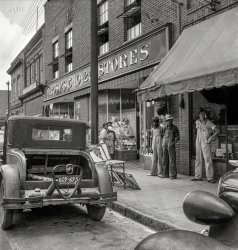
- Vince Jr.: 1933
- ... of me next? I was marched down to H & E about 1937 for a portrait. How much should I contribute to avoid it appearing on ... Posted by Dave - 09/13/2011 - 11:18am -
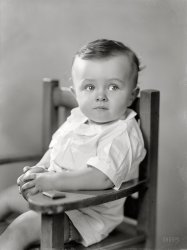
- Everywhere a Sign: 1941
- October 1941. "Syracuse ice cream vendor." Continuing the story begun here . Medium-format nitrate negative by John Collier. View full size. ... Posted by Dave - 10/17/2012 - 9:41am -
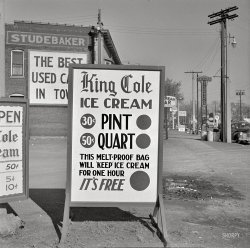
- Teen Mother colorized
- This is a colorized version of Dorothea Lange's 1937 photograph of an 18 year old mother from Oklahoma in a California ... daughter of a coal miner. The photo was taken in 1936, not 1937. And it's Dorothea, not "Dorthea."
Clrzed? Srsly? This looks like a ... Posted by Kenny - 04/12/2017 - 1:42pm -
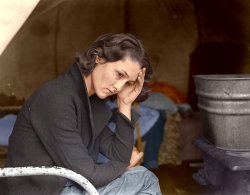
- D'Oily Car: 1943
- ... to be recycled into the combustion process.
The 1937 Plymouth brochure can be found here .
Quaker State My guess is ... Posted by Dave - 03/09/2017 - 10:47am -
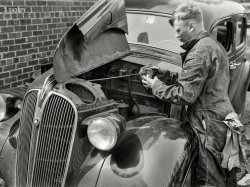
- One Way: 1936
- ... was apparently located at 5-7 Peace Street as per the 1937 city directory.
Despite my best efforts to figure out what happened to ... Posted by Dave - 12/07/2015 - 11:51am -
![One Way: 1936 February 1936. "Narrow street in New Brunswick, New Jersey." That part of town known in many American cities as the Gashouse District. Medium format nitrate negative by Carl Mydans for the Farm Security Administration. View full size.
This is Peace StreetThis would be looking down Peace Street, as Eber's was apparently located at 5-7 Peace Street as per the 1937 city directory.
Despite my best efforts to figure out what happened to it, I couldn't figure out where Peace Street was/is, as it apparently was either renamed or obliterated over time.
All Gone NowThis was looking north up Peace Street toward Albany. (Burnet became Peace at the intersection where this was taken.) Most of this came down in the 50's as part of a roadway expansion, and the rest when what became the Hyatt Regency was built in the early 80's. Hard to believe the gashouse lasted until around 1960!
I remember that building!The tan brick affair (well, I know it was tan but of course it's in black and white here) with arched windows at the end of the street is the Public Service Electric and Gas building. I was born in New Brunswick and I remember it, but I don't remember any narrow street like this opening onto Albany Street where the building was. I also don't remember a fuel storage tank, although it certainly stands to reason one should have been there.
I'm sure the other people who posted comments are right - it is Peace St., which I never heard of. There were very few cobblestoned areas in the New Brunswick I remember, mainly the square by the railroad station.
[The "fuel storage tank" is a gas holder, also called a gasometer. - Dave]
Narrow streetsI lived on Neilson Street in the early 50's. The area wasn't much different then. Most building were torn down in the 60's and replaced with restaurants I can't afford to eat in.
Can't help thinkingphotographically speaking that the original Peace Street was much more interesting than its present incarnation. Packed full of character.
Based on historical aerial photosThe large tank came down between 1957 and 1963. The space it occupied is currently the Johnson & Johnson property (the tank was near the current Johnson Drive on the Route 18 side of the property).
Unfortunate ChangeWhat a remarkable change to the area between then and now. It looks like suburbia today, while in the 1930s it was apparently part of the city center. I can imagine all those old buildings restored, renovated, and in use as a trendy touristy area of shops and eateries.
Tough Work If You Can Get ItIt appears they had no problem getting men to shovel snow during those tough Depression years.
1912 Sanborn map Here is a segment from a 1912 fire insurance map showing Peace Street between Albany and Washington Streets. I think the photographer was at the intersection of Church and Peace looking north. I estimate that the gas tower would have been situated in the vicinity of the '37'.
(The Gallery, Carl Mydans)](https://www.shorpy.com/files/images/SHORPY-8b26917a.thumbnail.jpg)
- Faro and Doris: 1940
- ... 35mm Kodachrome film went on the market sometime around 1937.
My grandpa Faro Caudill was my Grandpa and we have very few ... Posted by Dave - 09/07/2011 - 3:59pm -
